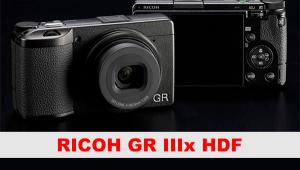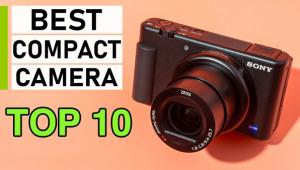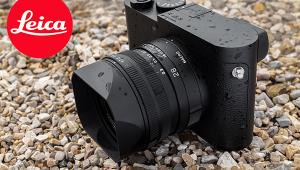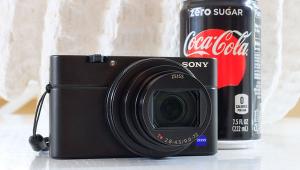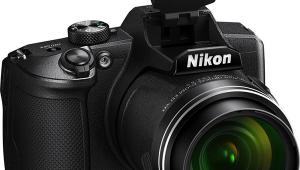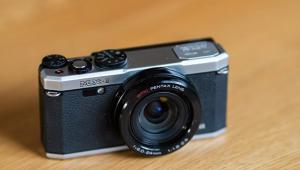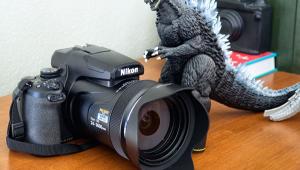Leica X1 Camera Review

The Leica X1 ($1,995) is a fixed focal length, non-interchangeable lens compact with a fast f/2.8 lens and 12.9MP CMOS APS-C sensor. Introduced over a year ago in silver and recently in black, it keeps apace with firmware upgrades, the most recent of which is claimed improvement of JPEG quality and enhanced AF speed in low light.
Though not as pocketable as the sub-compact class, it fits comfortably in a jacket pocket, purse or casual bag. While you could not properly dub it a no-frills camera, it lacks many of the tech gimmicks of other compacts as well as features considered standard, including video, various still image aspect ratios, and Scene modes. It does offer RAW in the form of DNG (Adobe’s RAW, adopted by other makers as well) and you even get a copy of Lightroom included in the price, available as a download after registration.


All Photos © George Schaub
The fixed lens is a prime 24mm (equivalent to 36mm angle of view) with a max aperture of f/2.8, yielding a good “street” and landscape point of view, although it’s not particularly suited for sports or some types of portraiture, which to me benefit from a longer focal length. The 2.7” LCD is the only composing screen, putting aside the optical and optional slip-in finder that can be used in the hot shoe, which makes optical viewing and auxiliary flash incompatible activities. There is a weak flash on-board, good for a taste of fill, with a clever push and pop-up activation.

The menu on the screen is bright and readable in all types of light although, unfortunately, that cannot be said of the view for composing images in bright sunlight. This is not helped by the fact that the monitor is fixed; with an articulating monitor you can, to an extent, use camera position to help shade the view.
While many compacts these days are simplifying their design they do so, I believe, to lower the intimidation factor. Yet their external control layouts belie their often dizzying array of functions; an encyclopedia of constantly expanding and often unnecessary features become available when the menu is opened on the LCD. The X1 is less deceptive in this regard, since the main controls one needs for making images are on the camera body, and there is considerably less, relative to the current crop of compacts, under the hood.
On top there’s one dial for power and drive modes, and one for aperture and one for shutter speed, which can be used for manual exposure control or choosing to work in aperture or shutter priority. On the back are quick selectors for ISO, white balance and focus mode selection, as well as playback, EV, and flash control, which are located around the familiar knurled dial used to make menu selections.

In the menu you choose resolution, file format (including a JPEG + DNG) and other basic setup functions, with few concessions to internal image processing “special” effects— rather basic Vivid, BW and BW High-Contrast options, sharpening, contrast and saturation controls, pretty much 2006 era parameter controls, and that’s about it. There are a few more like flash sync options and a bogus “image stabilization” mode. (The function billed as image stabilization is just a two-exposure trick--a sort of shutter speed bracket--that combines a faster and a slower speed shot into one file. They should drop describing this as image stabilization as it is, to me, a misleading characterization, at least in light of lens and sensor IS systems in other cameras.)


Any camera, even a Leica, that offers LCD-only viewing puts the shooter at a distinct steadiness disadvantage. There is, as mentioned, an optional optical finder that can be slipped into the hot shoe, and they do have Auto ISO, and that works fine with numerous options and settings that make it much more than window dressing.
There being less under the hood in regard to effects extend to the image processor itself, albeit a product of 2009/10 technology (with a number of firmware upgrades). The processor delivers 2-3 frames per second at most, stalls a bit when presented with complex processing (like low light imagery) and can only handle 6 images in the buffer at the fastest framing rate. If complex image processing effects at a rapid pace are your cup of tea this camera isn’t.
Yet, despite it’s almost charming obsolescence, the Leica delivers what you might expect—exceptional image quality, a familiarity with and simplicity of shooting that will appeal to traditionalist photographers and the assurance of Leica build, being of light magnesium and aluminum and sporting a fast lens with 8 elements in 6 groups and 1 aspherical element. The DNG files open at 16 bit and while the images might appear a bit rough when you begin the files respond to even slight processing changes with very rewarding image quality. This goes especially for images shot at high ISOs.
Yes, the processor is slow, there are no video or special effects modes, the only aspect ratio is an almost stubborn adherence to 2:3, and differentiating the focusing modes is an almost labyrinthine experience. But the aesthetics of shooting with a Leica are certainly present in the X1, as is the pleasure of the delivered image quality.
Change happens so rapidly in today’s digital photography world that a camera like this can often be left in the dust, perhaps undeservedly so, but at this price and with the current competition, the X1 probably only makes sense for dedicated Leica aficionados.
- Log in or register to post comments
